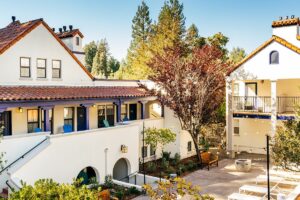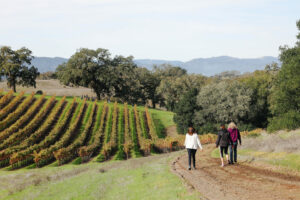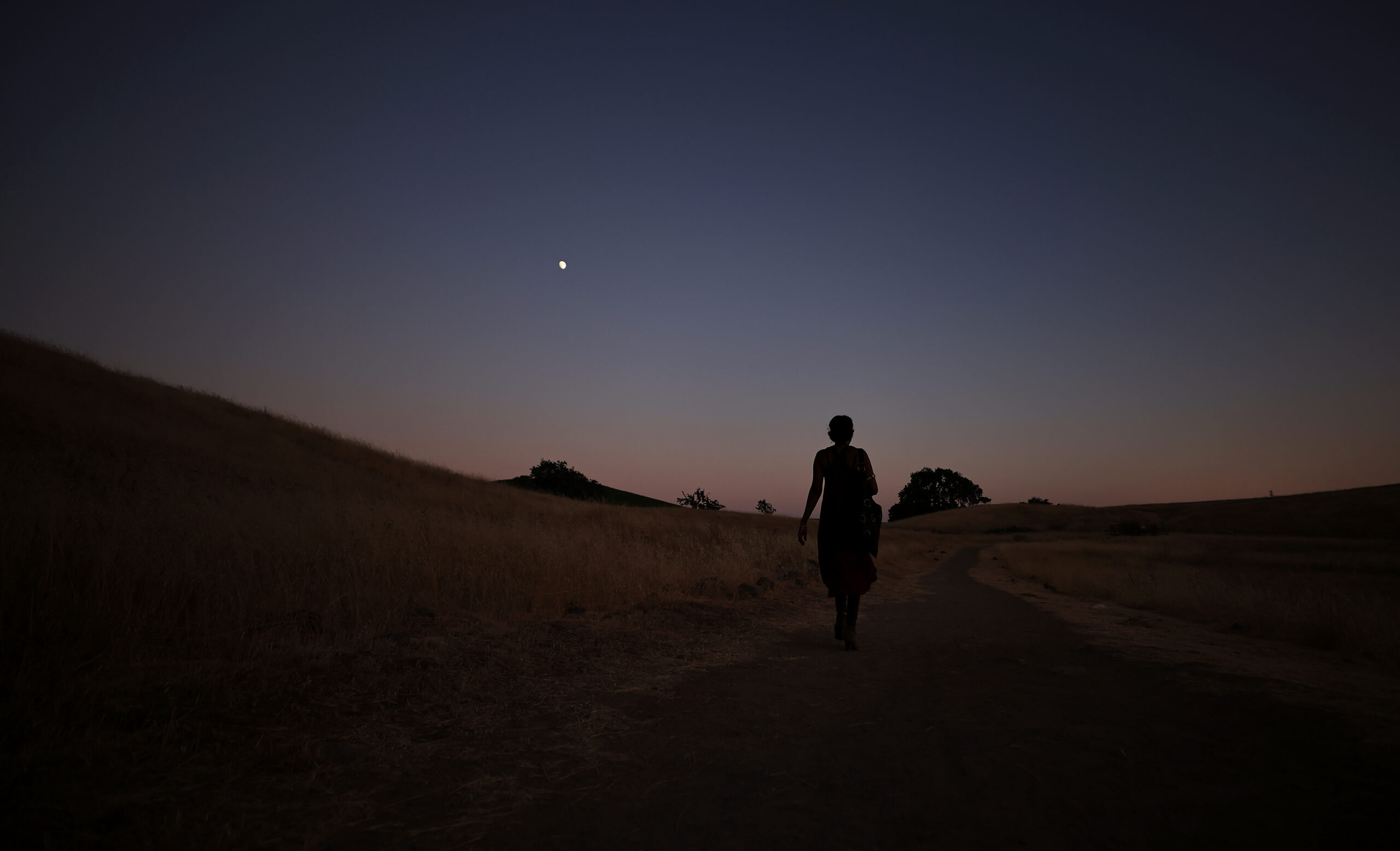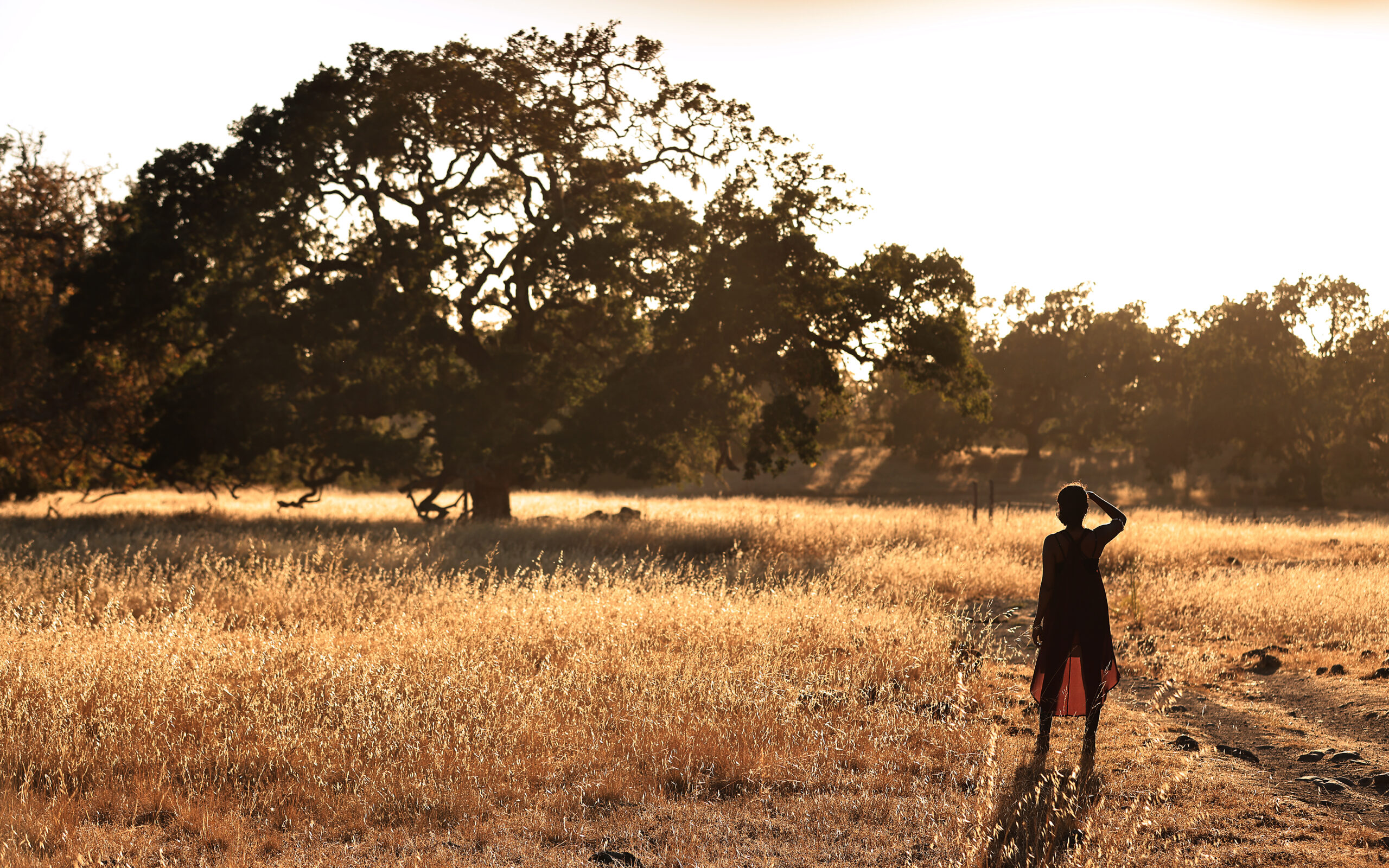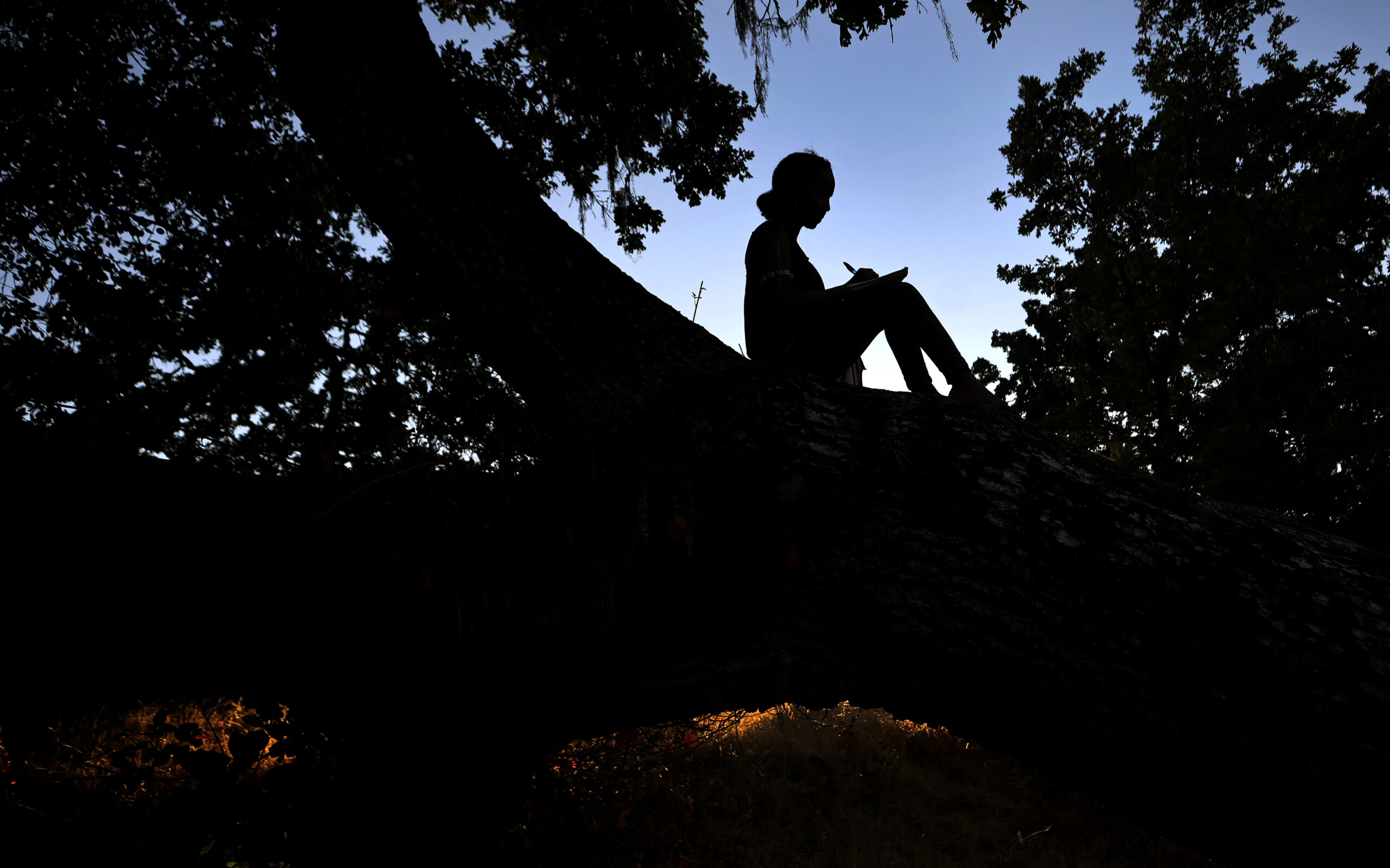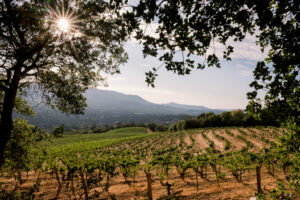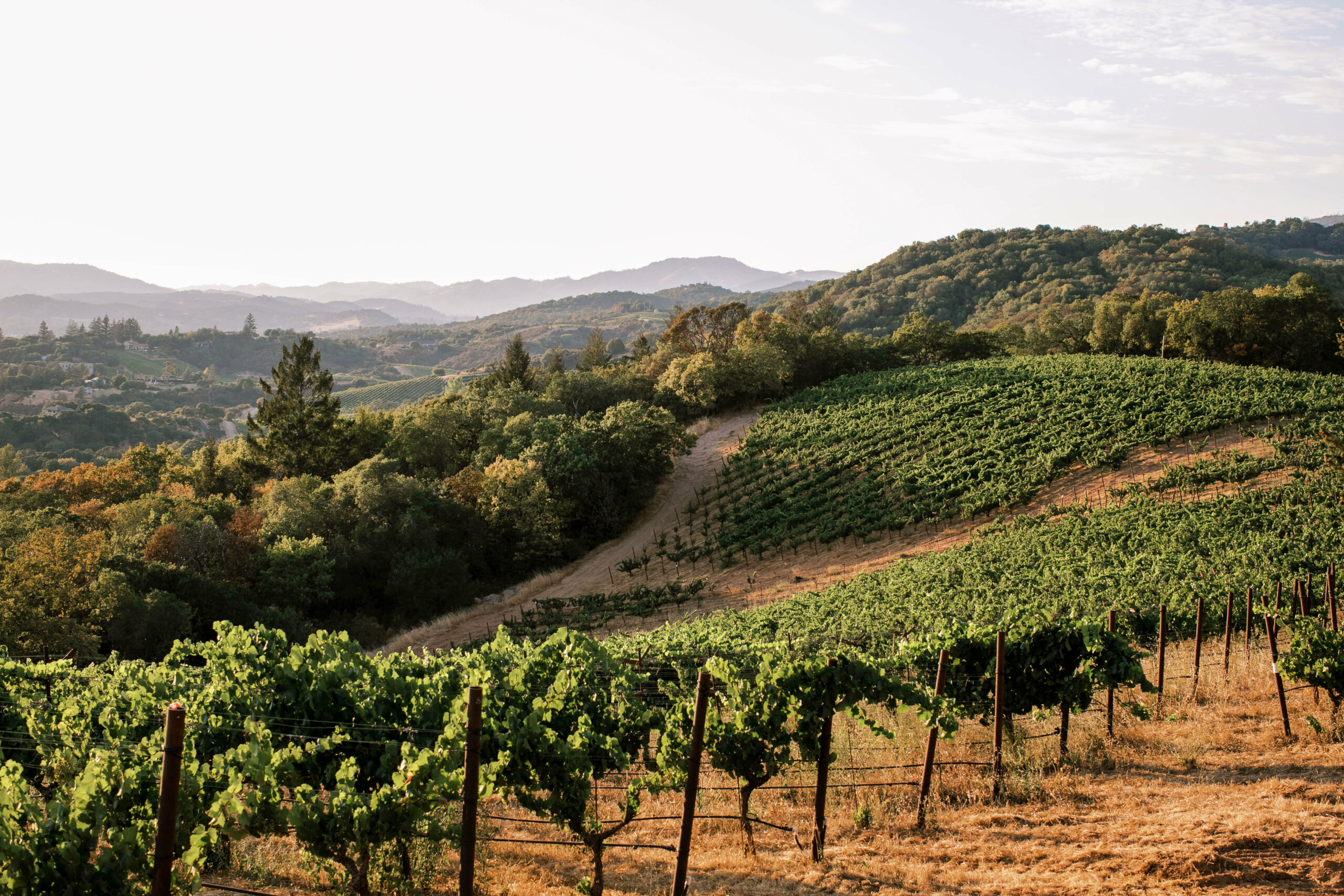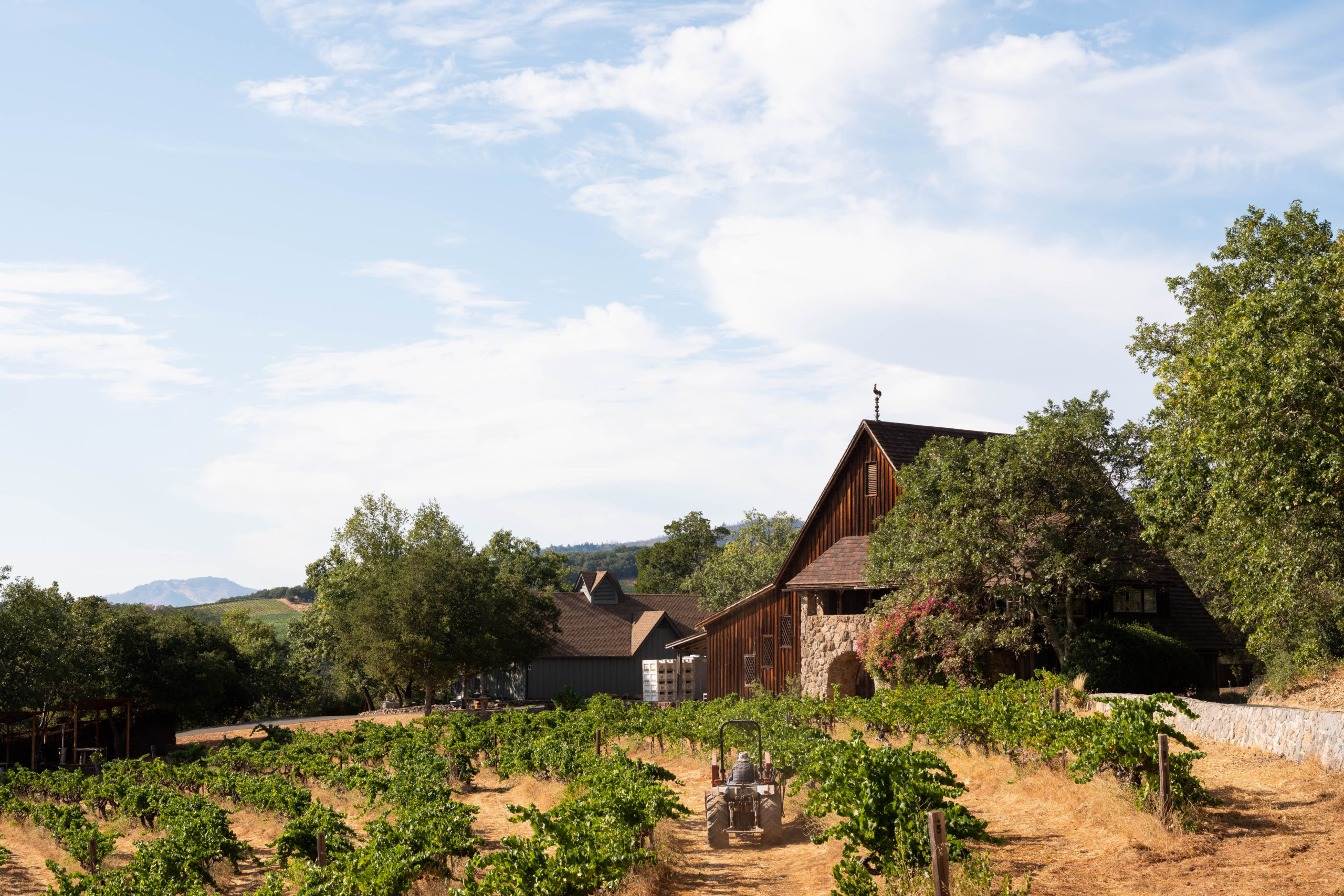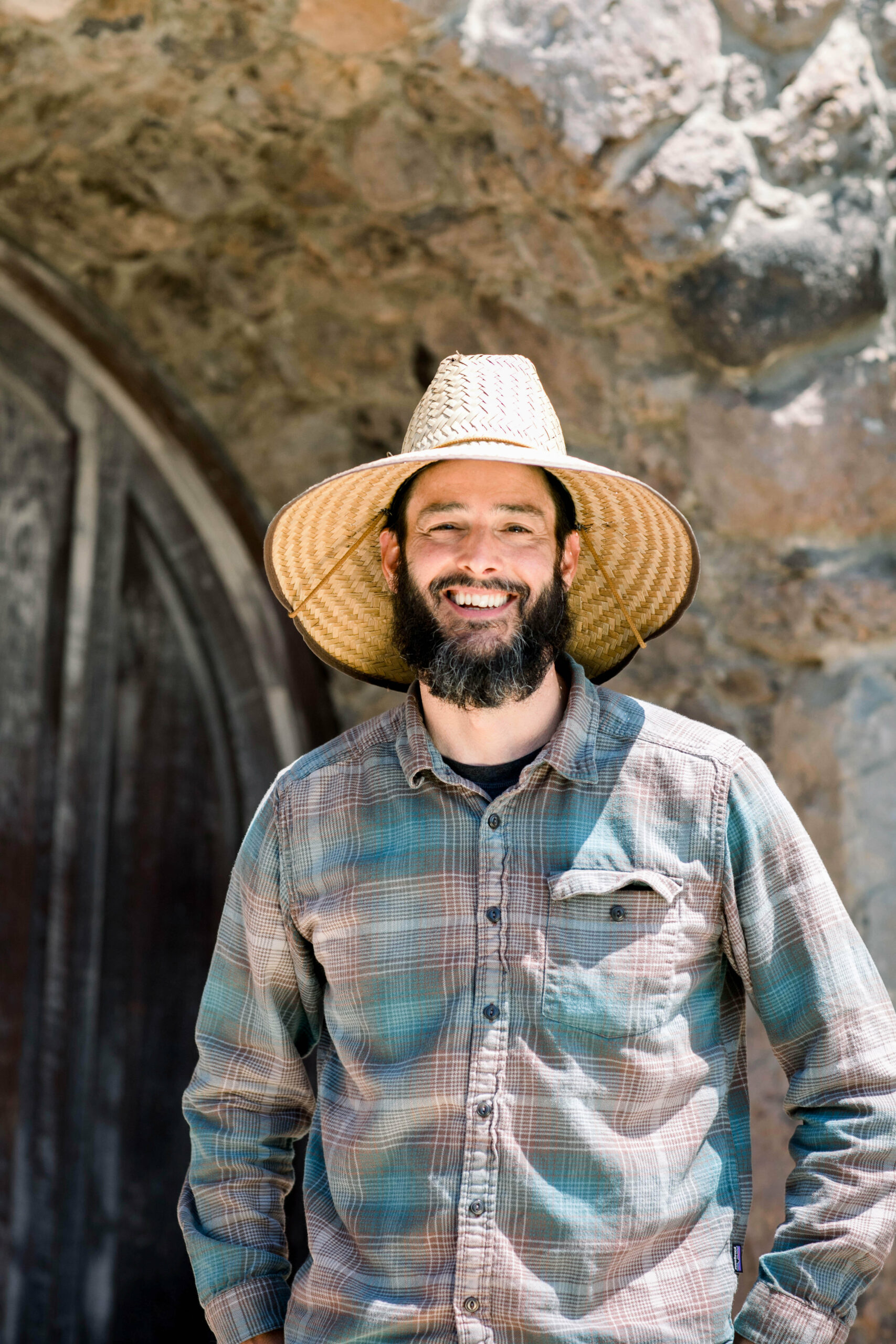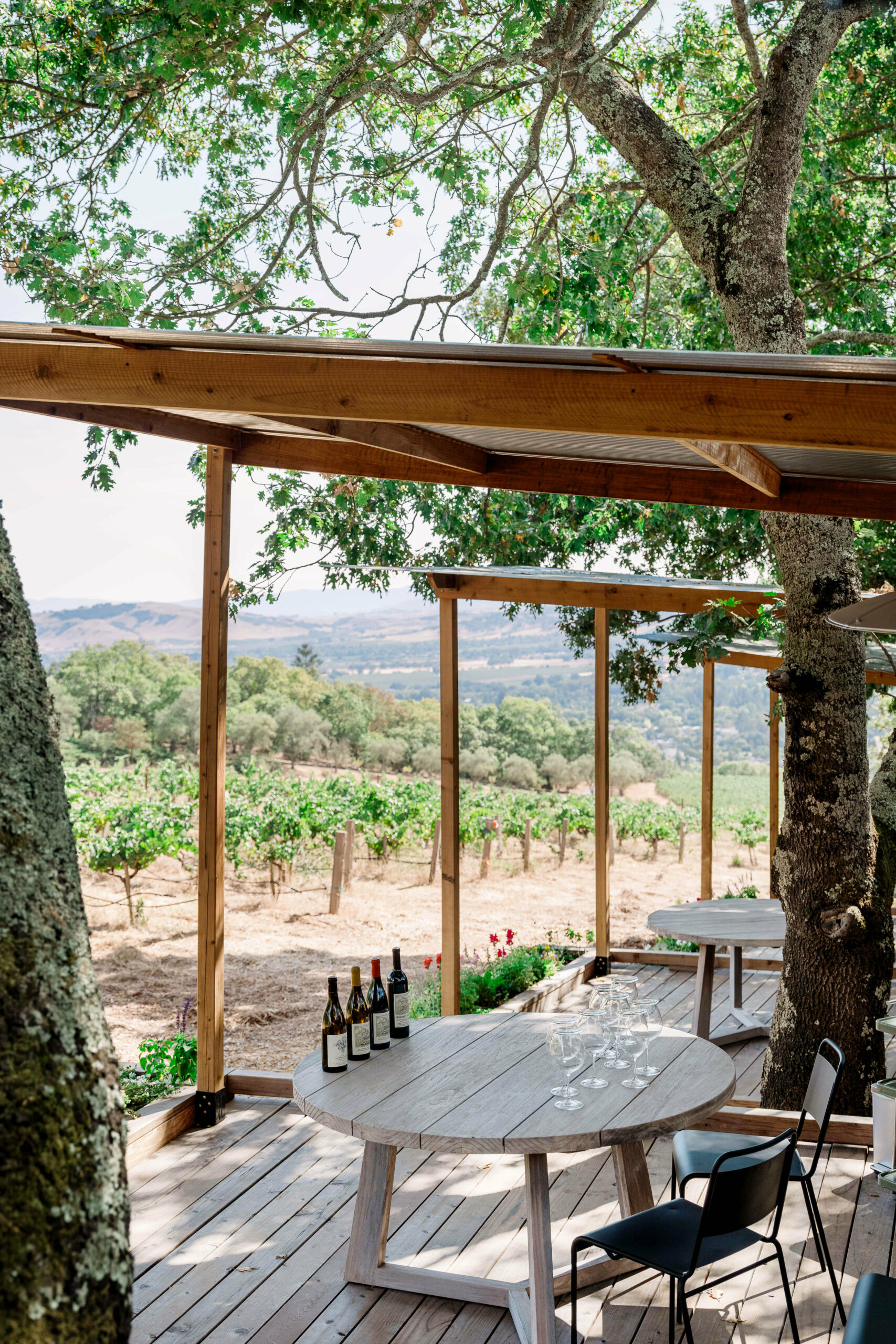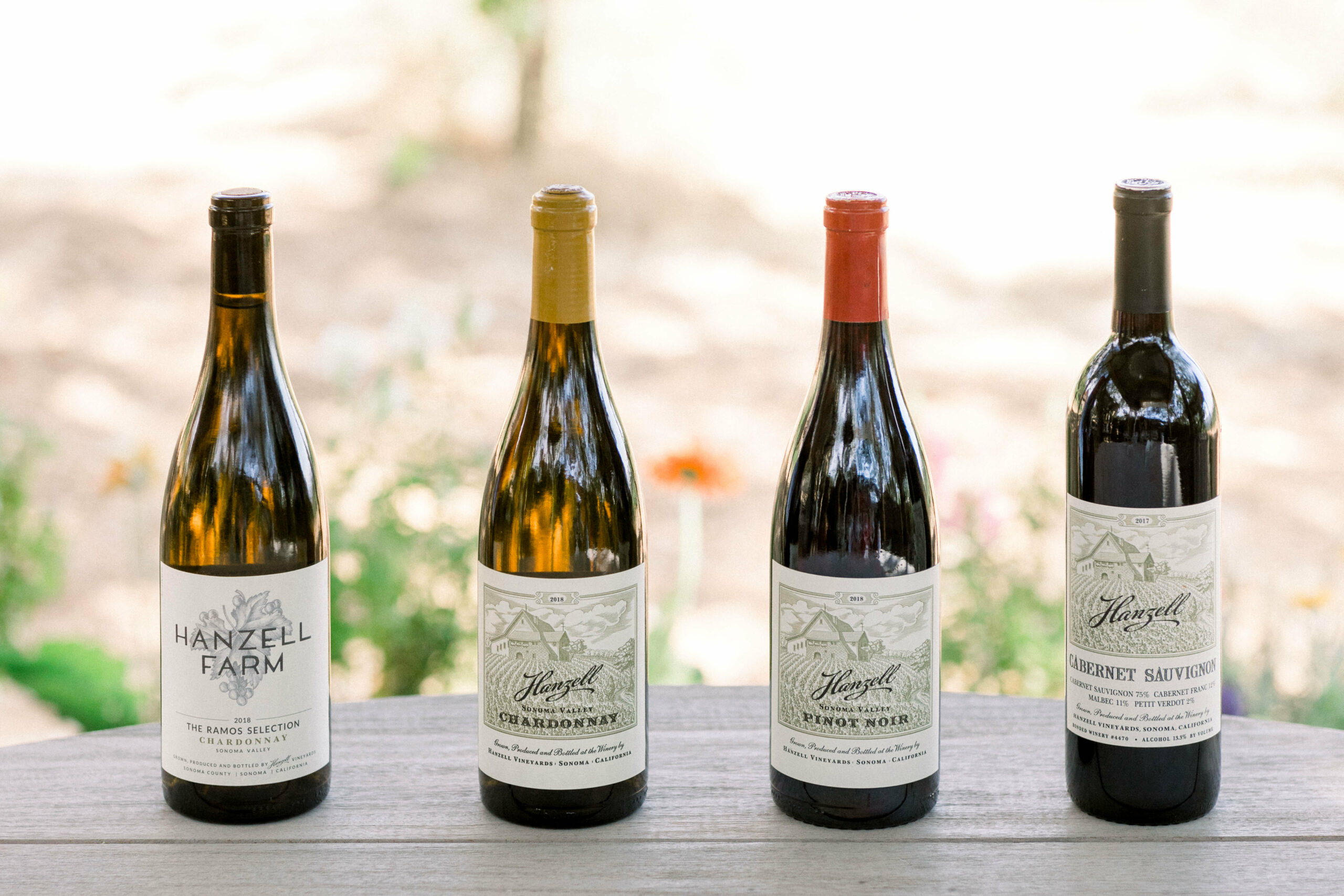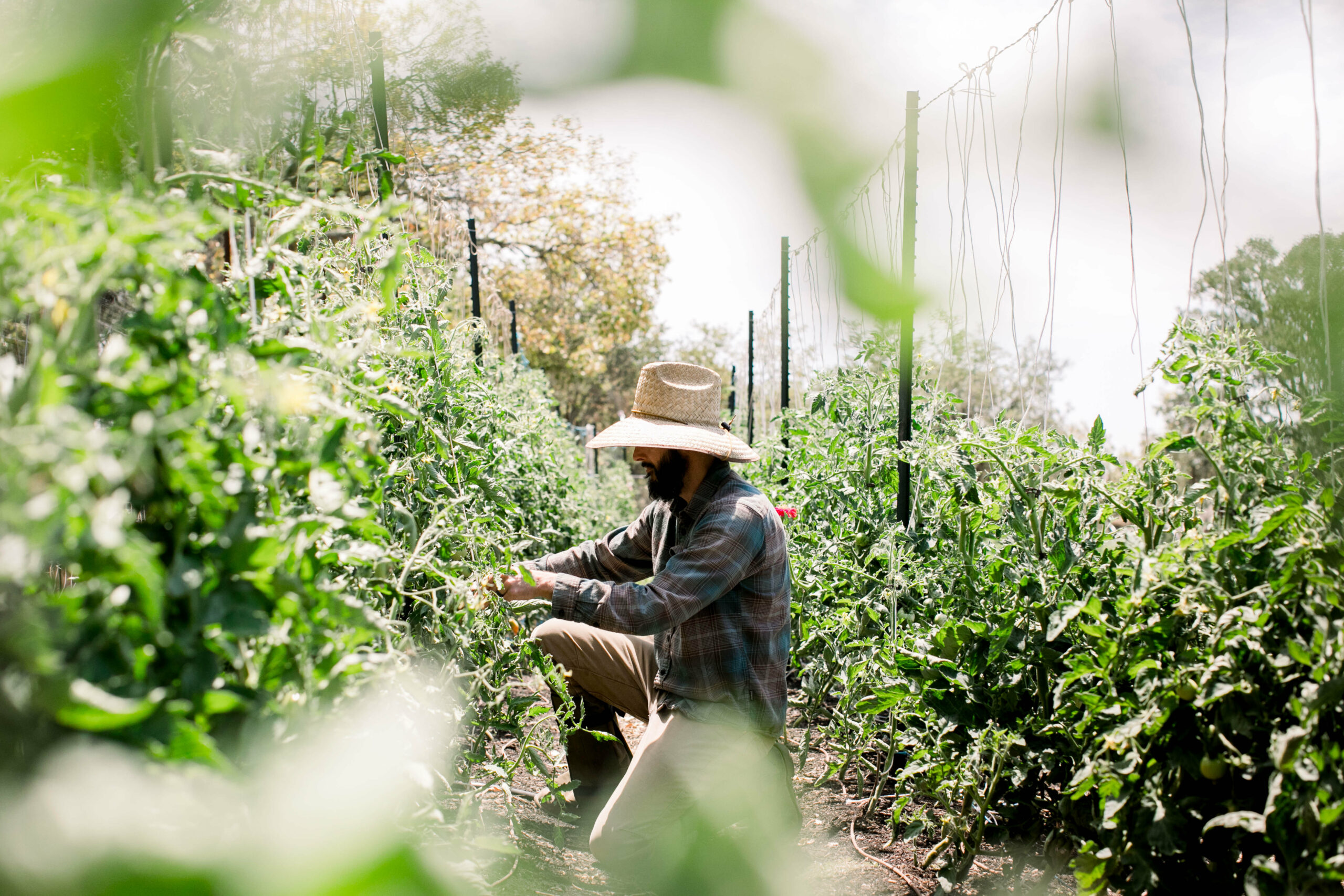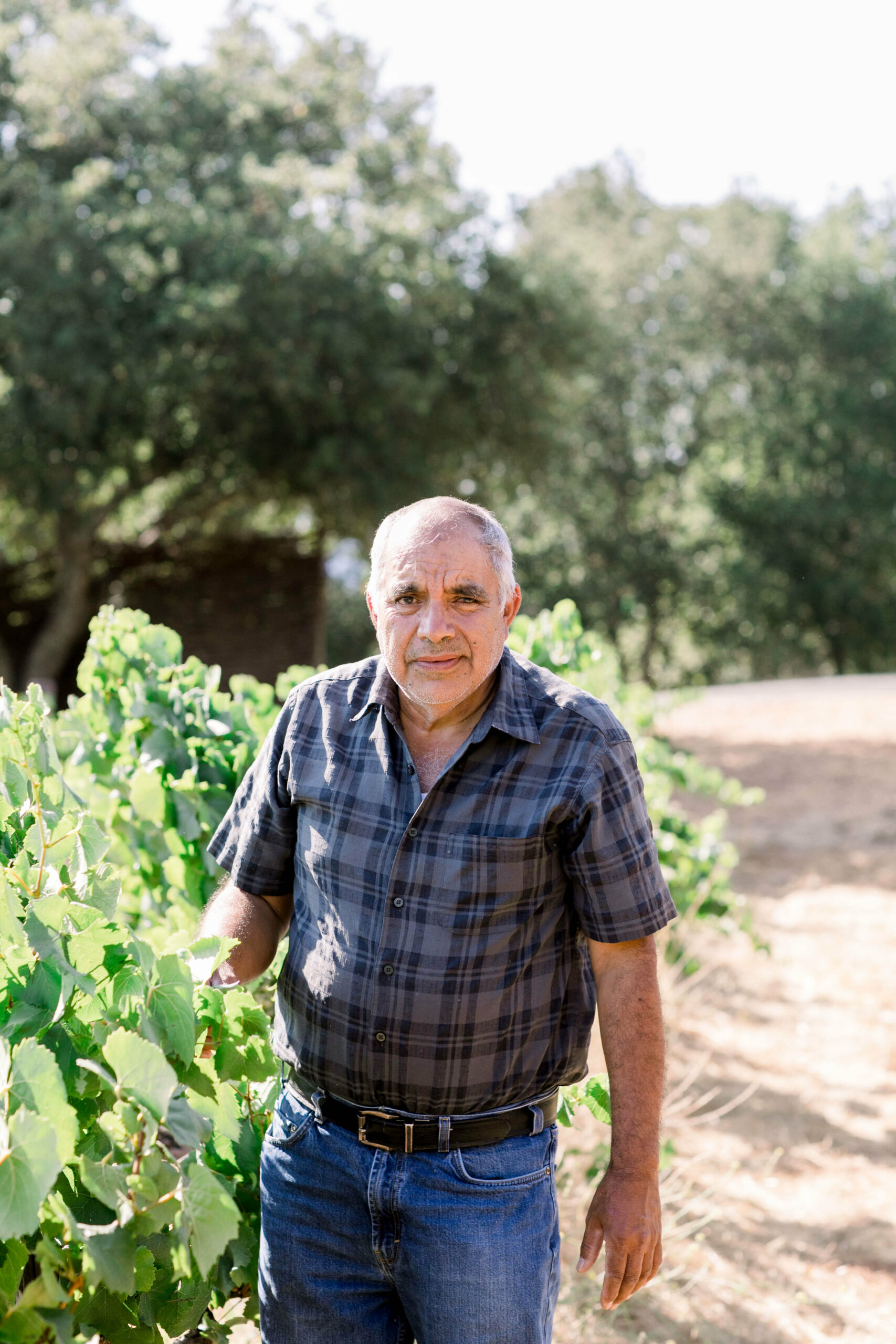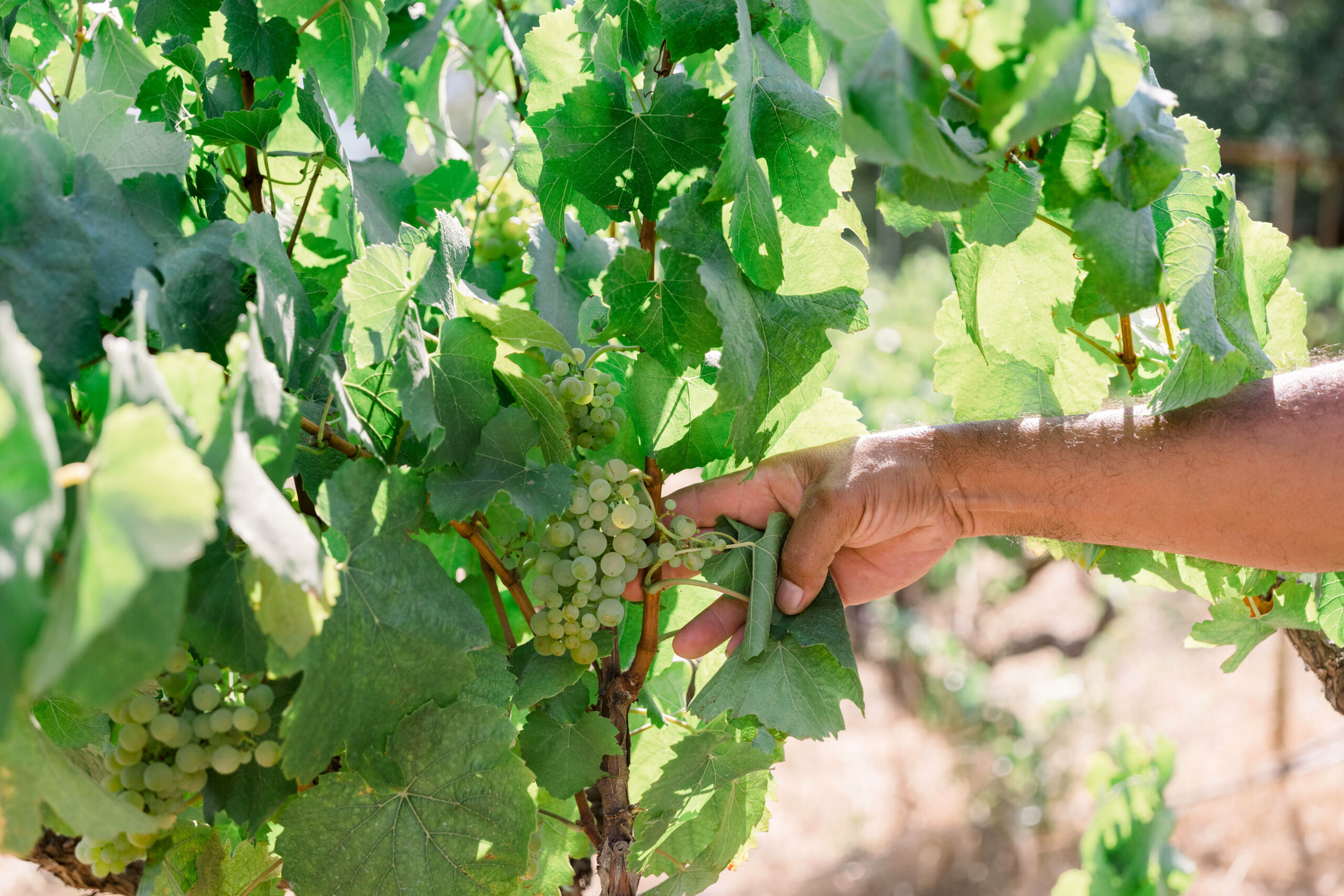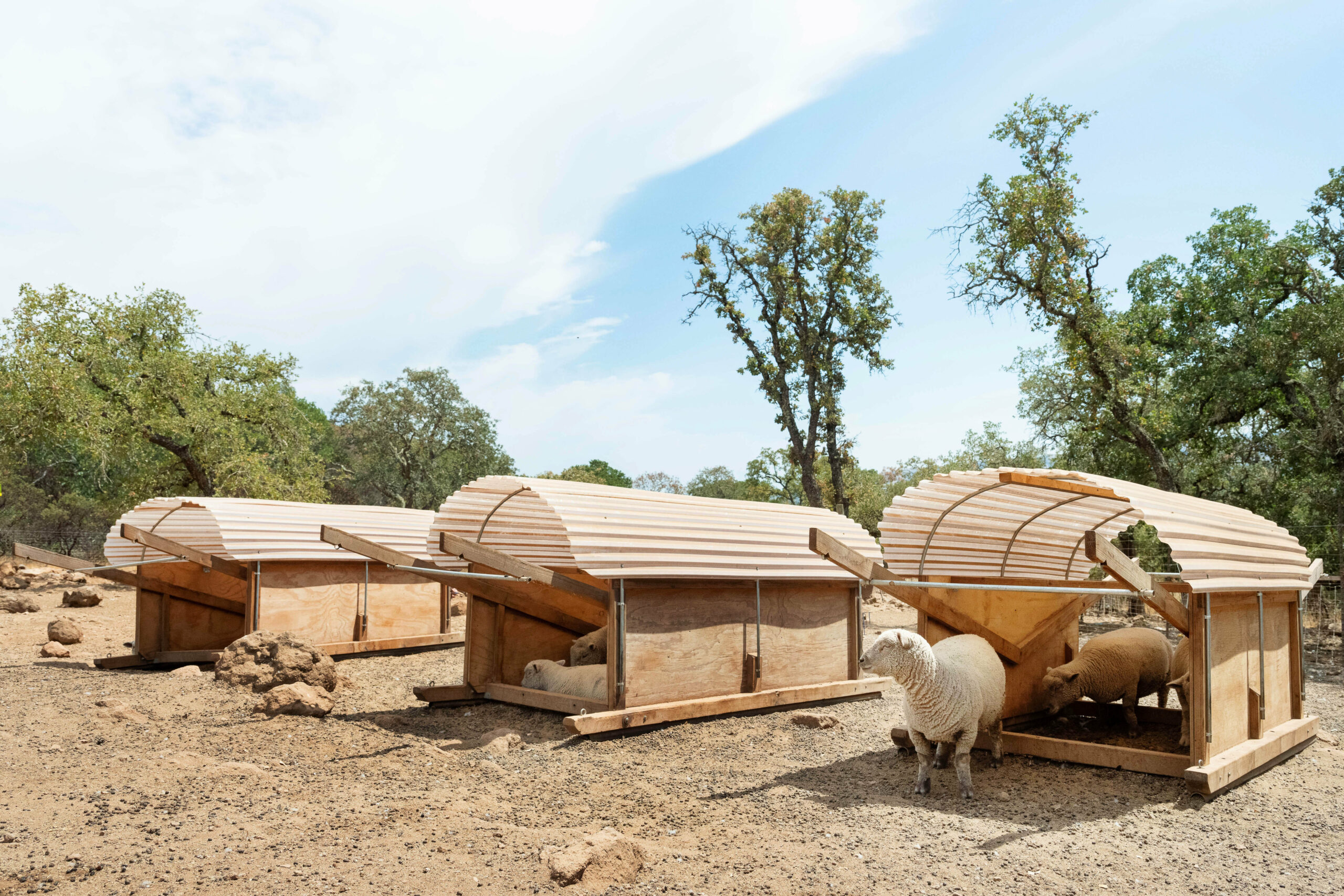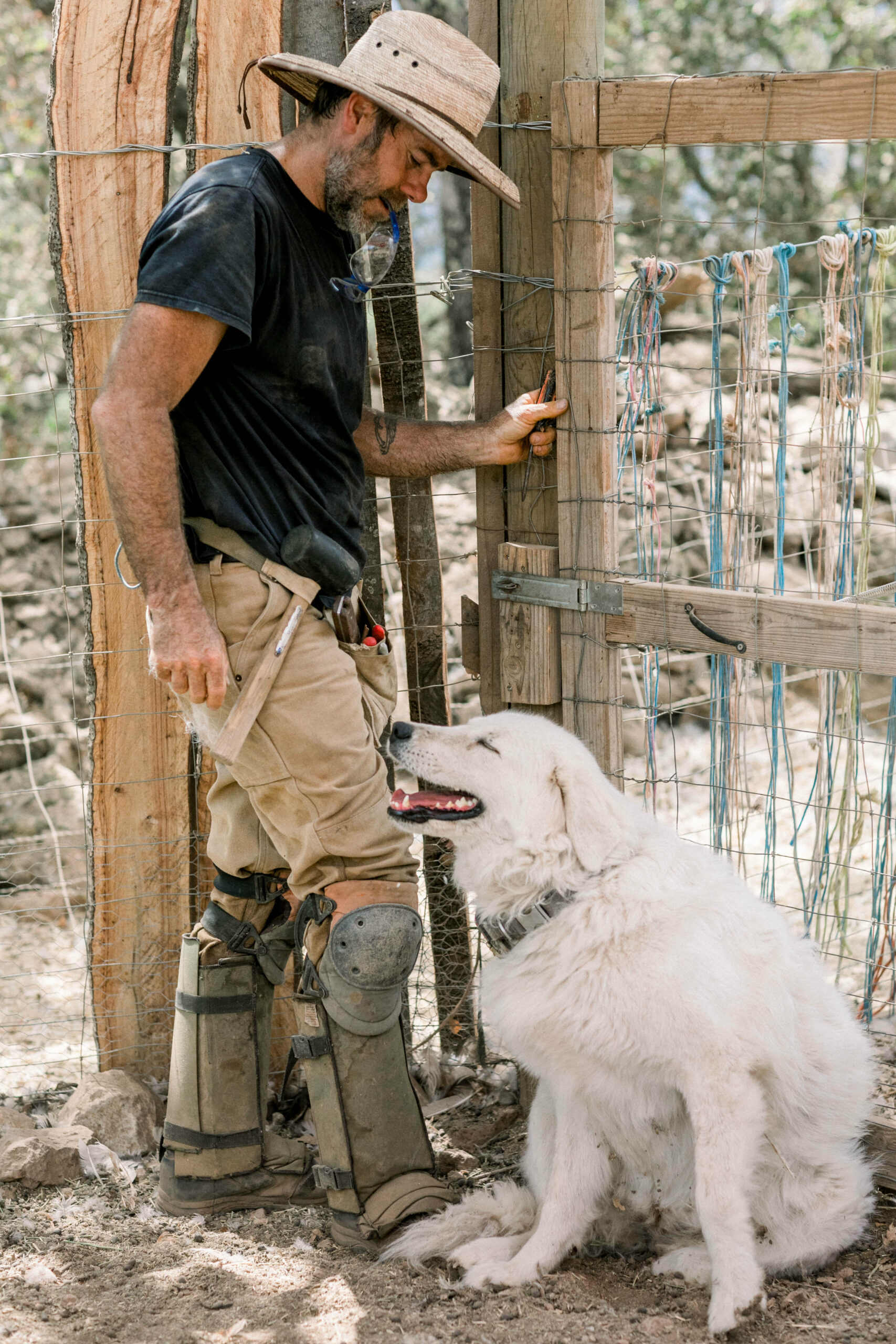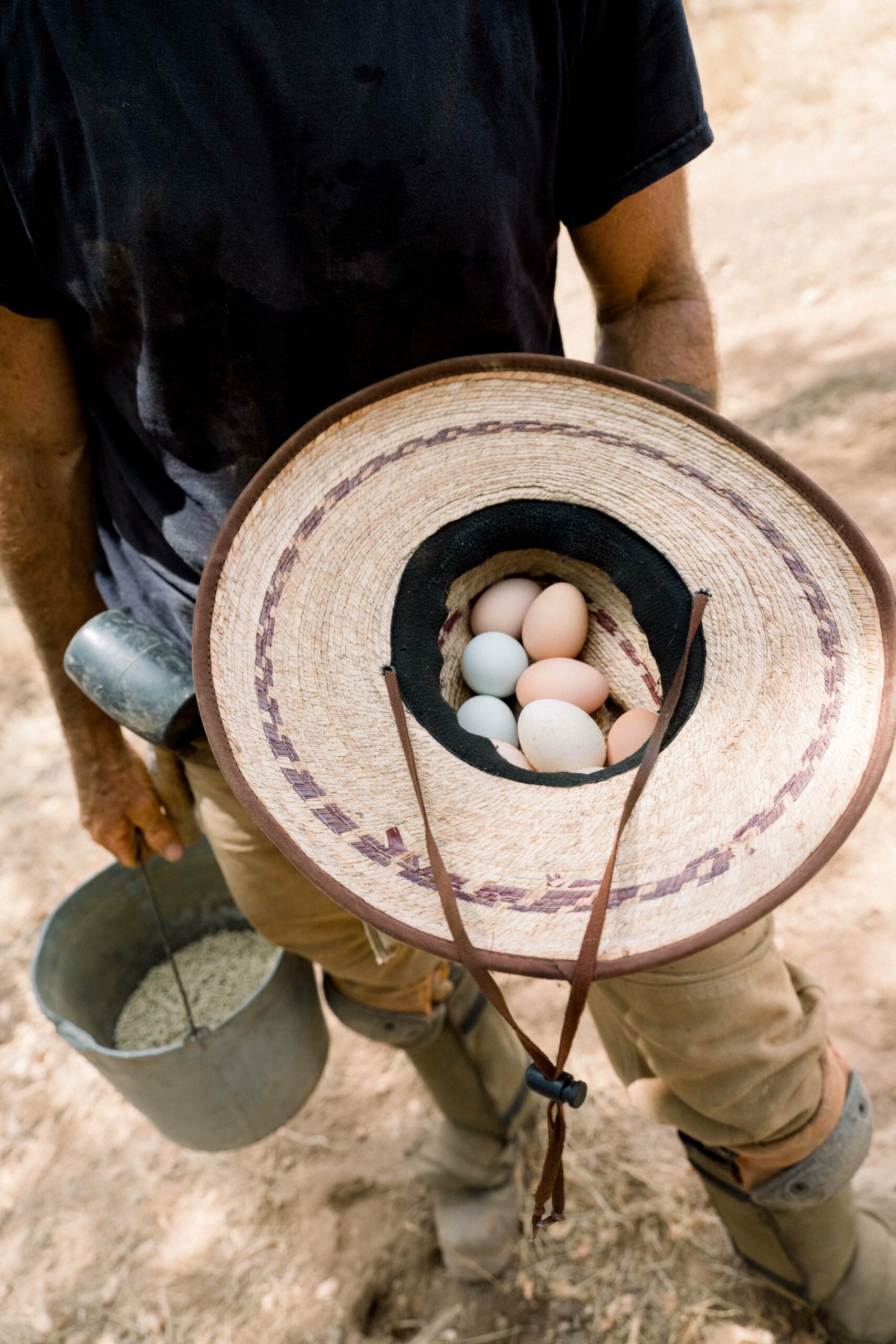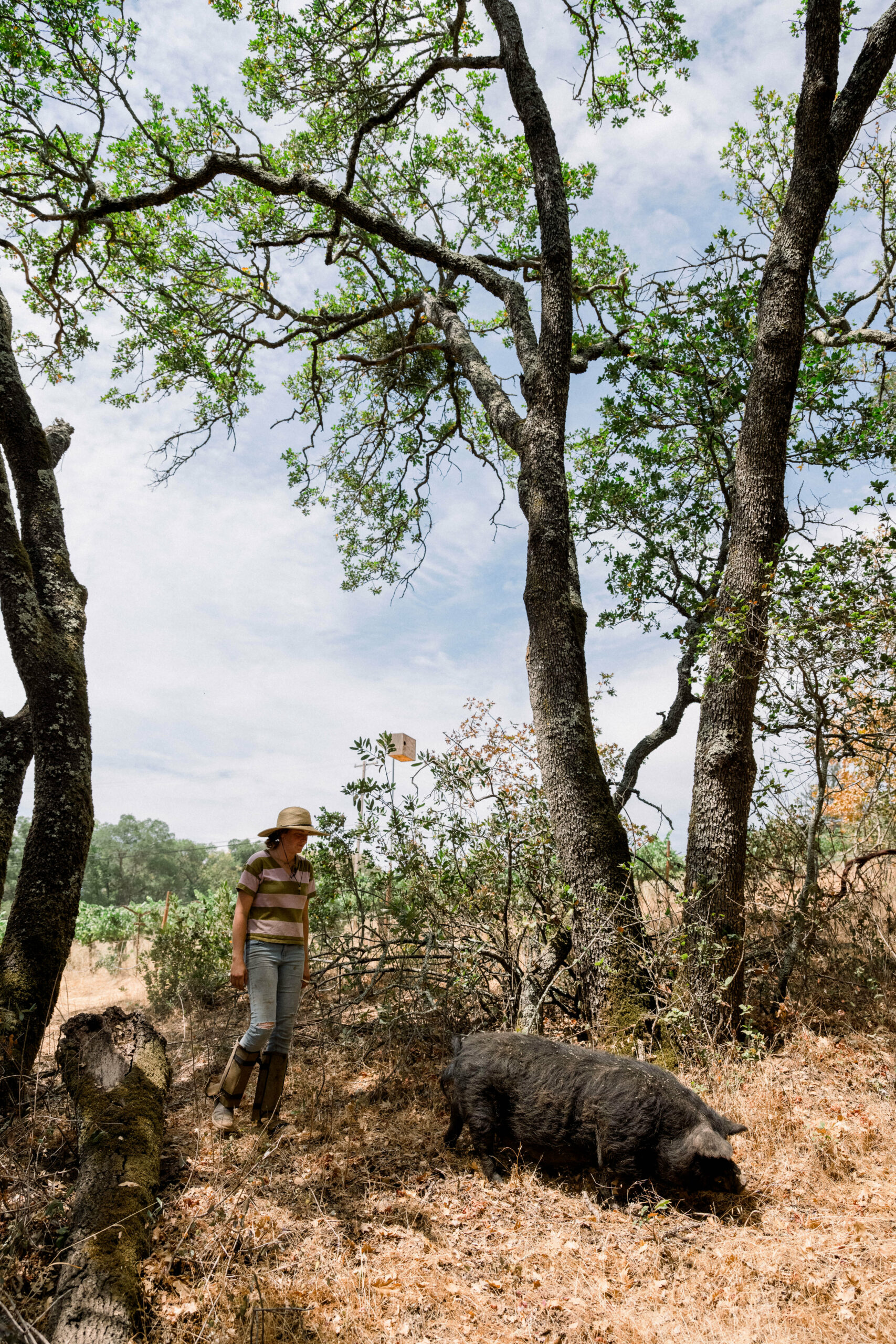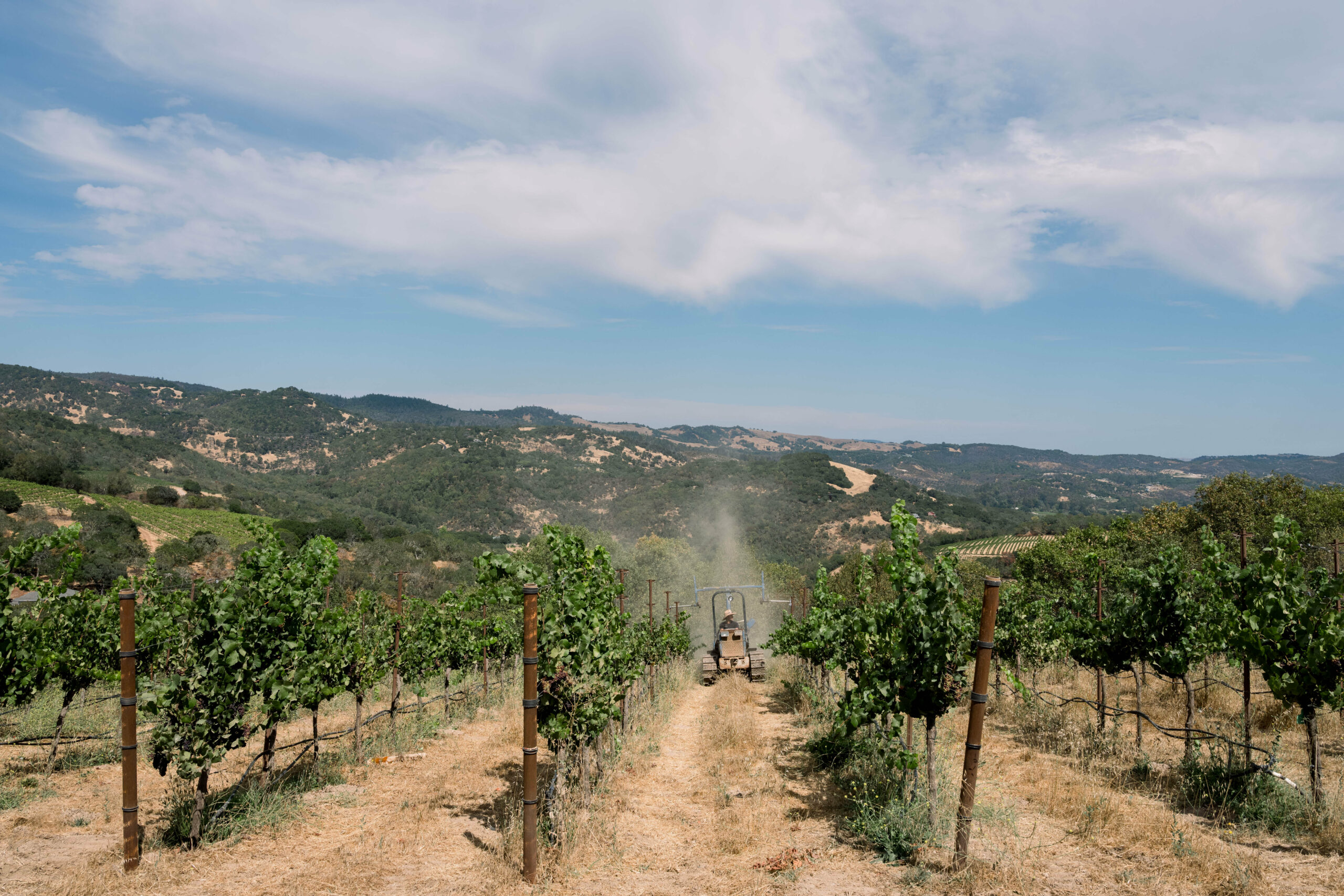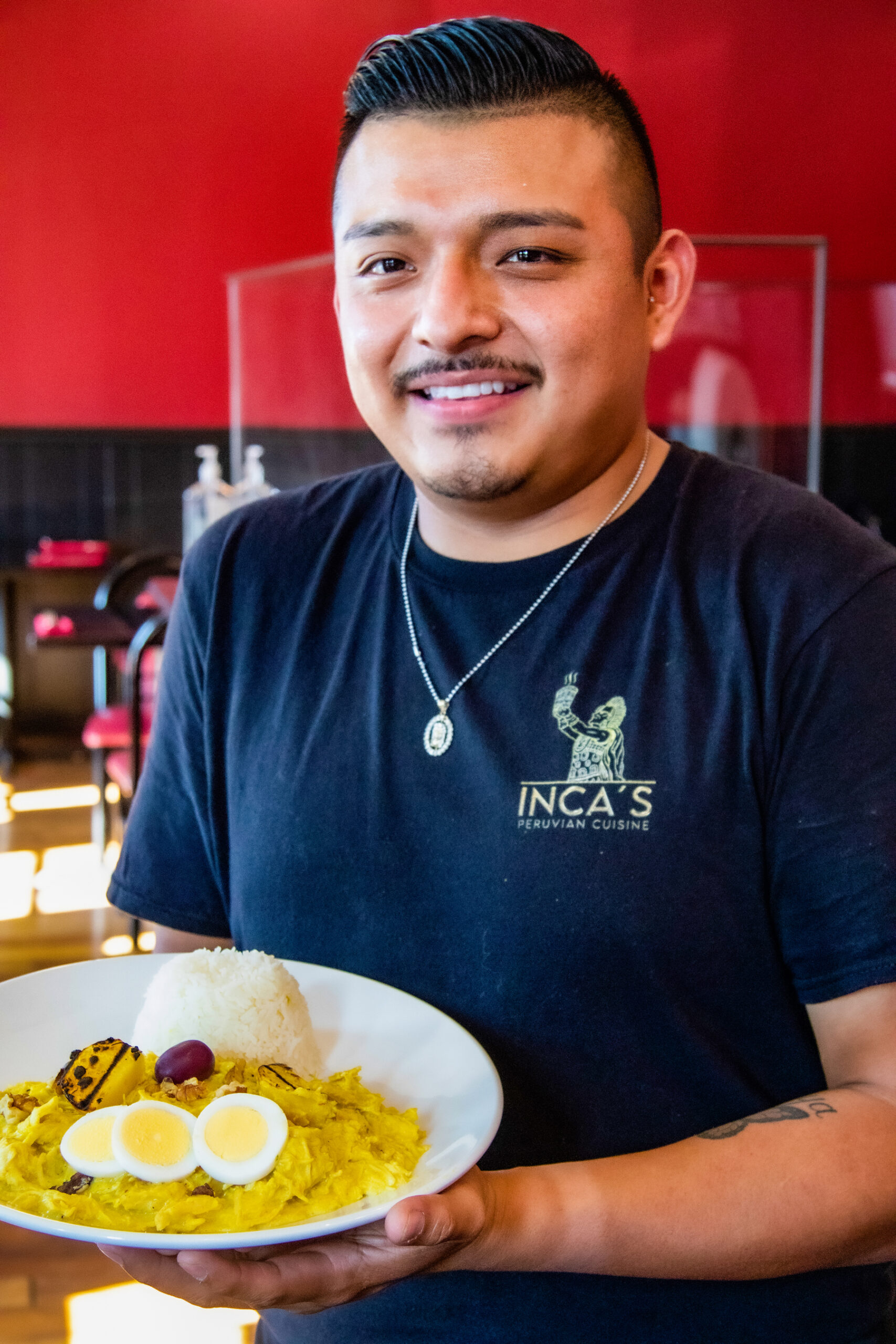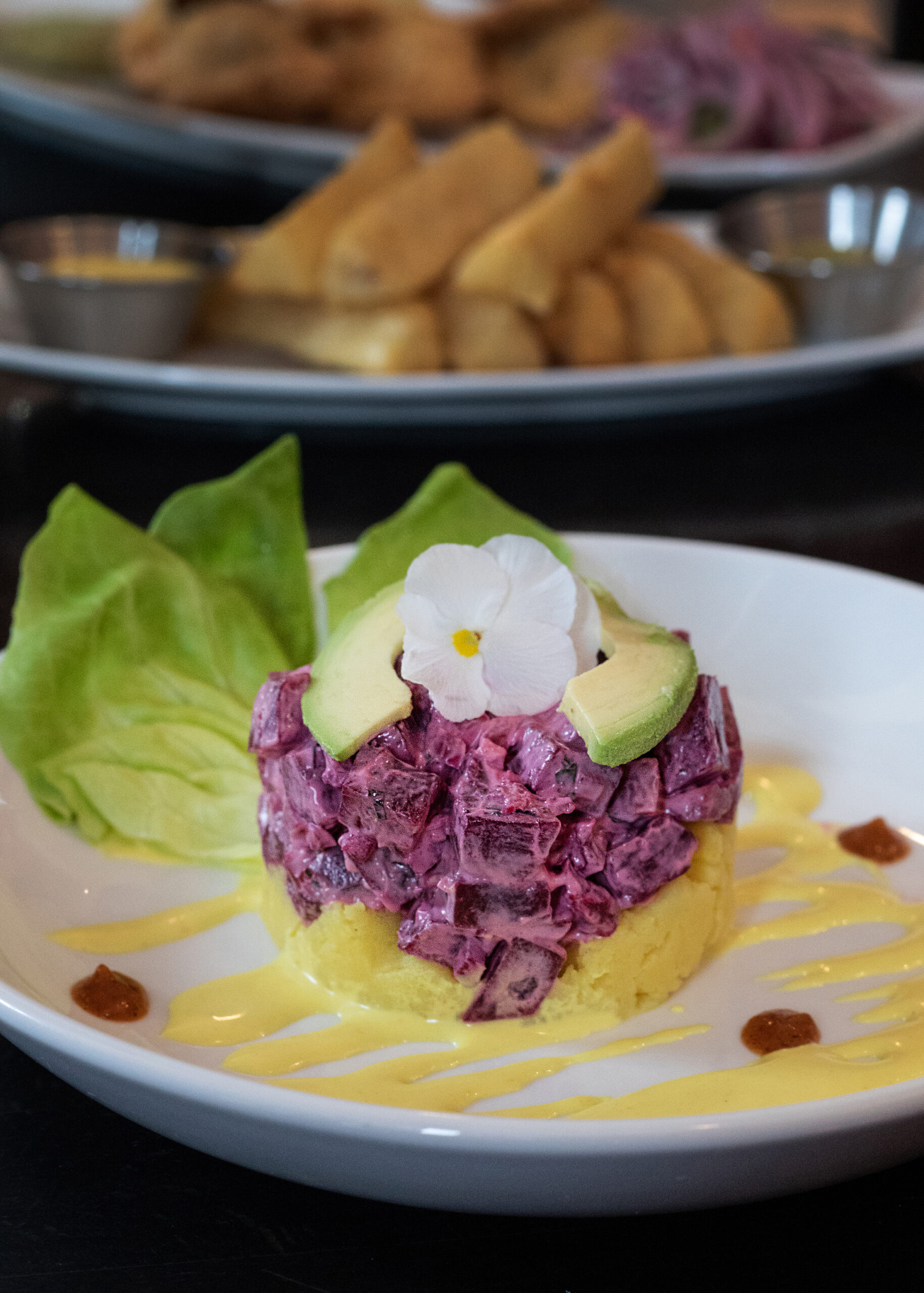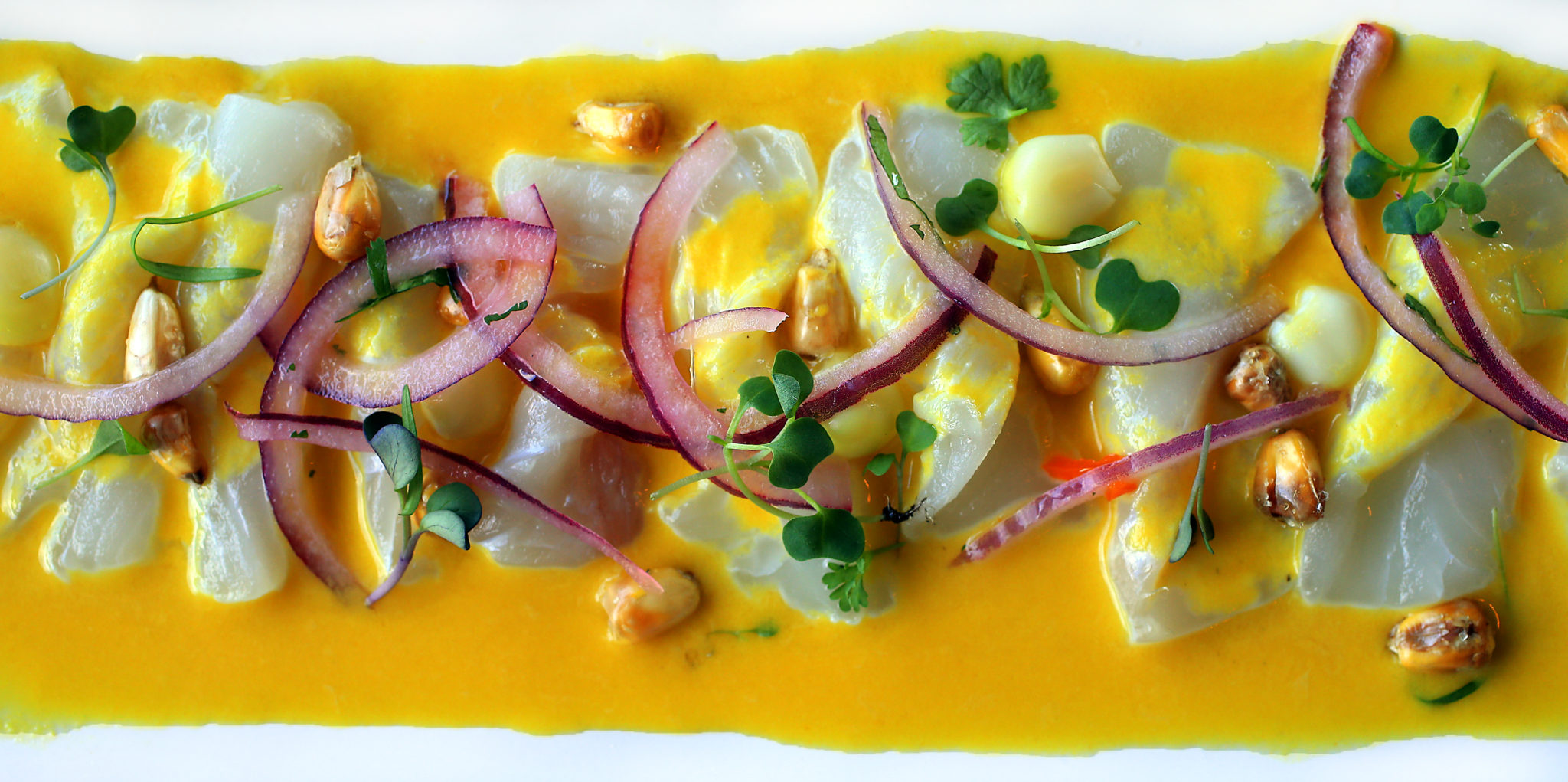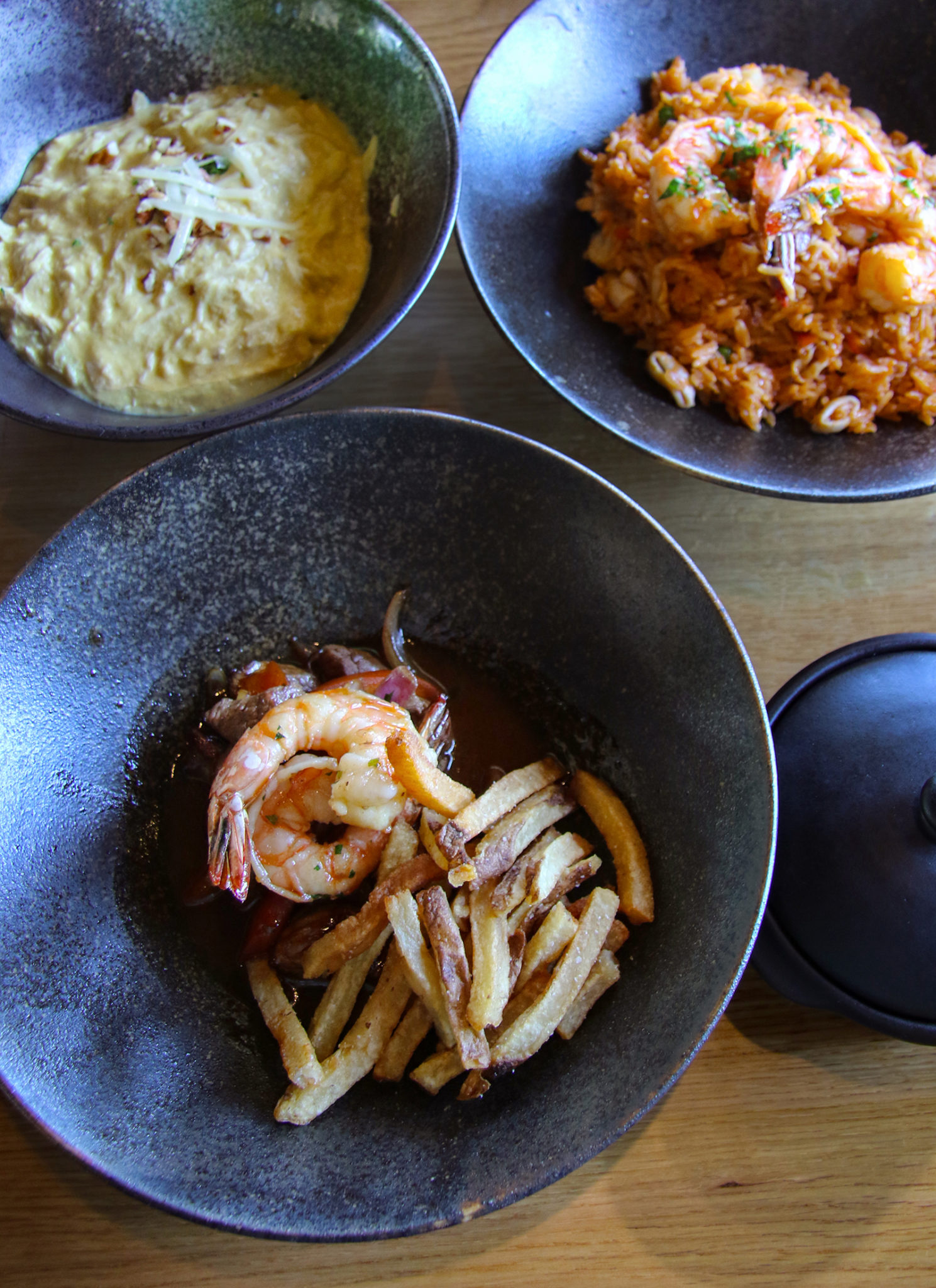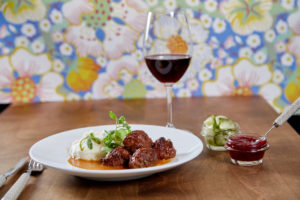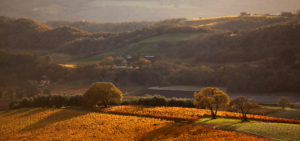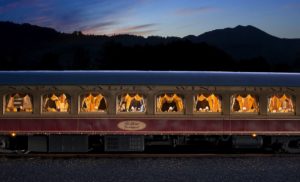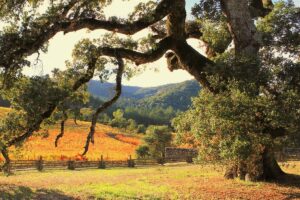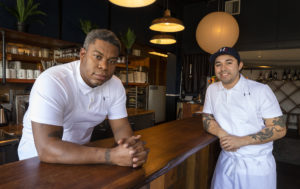There’s no need to travel to Vermont to see its famous fall foliage and the vivid hues of chartreuse, orange, amber, crimson and purple. We have them in Sonoma, too, often conveniently displayed at and near vineyards and wineries. Tasting wine while soaking in the autumn color is far more rewarding than watching sap run from a tap in a New England maple tree.
This is the ideal time to experience Sonoma County’s Technicolor transition from summer to fall and, eventually, winter. But don’t wait too long — some trees, shrubs and flowering plants, just like the Oakland A’s, have already called it a season.
In the case of grapevines, a very dry 2021 made for a quick, light-yield harvest (though winemakers report wine quality will be exceptional), and the majority of locally grown grapes will have already been picked by mid-October.
Yet there’s still plenty of eye-popping “leaf peeping” to be enjoyed in Wine Country in the next few weeks, sometimes accompanied by glorious sunsets and always with exceptional wines to sip.
Here are a handful of Sonoma County wineries with great October visuals to go with the vino.
Bartholomew Estate Vineyards and Winery
Hiking through vineyards is a fine way to see fall colors. But the elevated view from atop a gentle horse at “Bart Estate” offers a higher-level, ever-changing perspective. The Sonoma winery, in conjunction with Sonoma Valley Trail Rides, hosts 45-minute equine rides through the 375-acre estate and its vineyards, with a bottle of wine to take with you upon dismounting ($150).
Alternatively, hike a 3-mile trail and see oaks, madrones, redwoods and grapevines in their various stages of seasonal change. Afterward, taste at the winery, which honors Frank and Antonia Bartholomew, who bought the land in 1943 and founded Hacienda Winery on the site where Agoston Haraszthy planted some of the first European vine cuttings in California in 1857.
1000 Vineyard Lane, Sonoma, 707-509-0450, bartholomewestate.com
Jordan Vineyard & Winery
In the Alexander Valley, the buttercup-color Jordan chateau, covered in Boston ivy in fall, is as iconic a place as any in Sonoma County when it comes to wine tastings with an autumnal vibe.
The ivy morphs from vibrant green to red, then orange to pale yellow before the leaves fall, typically in November. Beyond those walls, on the 1,200-acre estate that includes approximately 120 acres of Bordeaux red grape varieties, is a broader rainbow of foliage colors best viewed during the Estate Hiking Adventure ($110), offered on Fridays through November (tickets went on sale Sept. 24).
The guided hike begins in the chateau courtyard and continues for 4 miles on a private trail, traversing hills and valleys and with an elevation change of about 300 feet. There is a rest break at Vista Point, with views of vineyards and mountain ranges. The hike also includes views of olive orchards, a lake, cattle pasture, apiary, culinary garden and a new pollinator sanctuary intended to lure endangered monarch butterflies to a safe haven. The moderately strenuous walk concludes on the terrace with a charcuterie and salad picnic, paired with Jordan’s cabernet sauvignon and chardonnay.
1474 Alexander Valley Road, Healdsburg, 707-431-5250, jordanwinery.com
Keller Estate
The view to the south, from 500 feet of elevation, from this Petaluma Gap vineyard and winery takes in southern Sonoma County and northern Marin County, encompassing colorful grapevines, trees and other foliage on the estate and beyond, glowing warmly in autumn.
Established by Mexico residents Arturo and Deborah Keller and now managed by daughter Ana Keller, the winery offers walking tours and tastings Thursdays through Saturdays ($50) and, through Nov. 7, a Dia de los Muertos Altar Tour (also $50, with a $15 add-on for empanada pairings). This Day of the Dead tour includes a stop at a community altar on the estate, which joyfully honors deceased loved ones in the Mexican tradition. Add a photo of a beloved family member or friend to the altar and toast them during the tasting. Proceeds of this experience will go to Pasitos, a Sonoma nonprofit that helps parents of young children prepare their kids to enter school for the first time.
5875 Lakeville Highway, Petaluma, 707-765-2117, kellerestate.com
Kunde Family Winery
There are few Sonoma wineries that show off autumn colors as gloriously as this Kenwood winery and vineyard estate. The 1,805-acre ranch, planted to grapevines by the Kunde family in 1879, is enveloped by terraced vineyards, oak woodlands and native shrubs and grasses. At this time of year, the collage resembles an L.L. Bean blanket of marigold, pumpkin and rust — especially when seen from 1,400 feet up during the Mountain Top Tasting ($80).
Visitors in search of fall colors also can join fourth-generation winegrower Jeff Kunde and his wife, Roberta Kunde, and their pooches for a four-hour hike, tasting and lunch ($90), with views and up-close inspections of the foliage that so remarkably transforms in October. Bring your own pup (leashed) as you take it all in before it’s gone; the last scheduled 2021 dog hike is Oct. 23. A portion of the fee will be donated to Dogwood Animal Rescue and the Sonoma County Humane Society.
825 Sonoma Highway, Kenwood, 707-833-5501, kunde.com
Medlock Ames
You can see bursts of color at this Healdsburg winery’s tasting room at the junction of Alexander Valley Road and Highway 128, but a visit to its Bell Mountain Ranch, a few miles south on Chalk Hill Road, is an even deeper dive into autumn.
There, the winery and 55 acres of vineyards are part of a 338-acre, organically and sustainably farmed estate, which also includes 800 olive trees, orchards and gardens. Most of the property is in its natural state, with oaks, grasses and chaparral and corridors for wildlife to pass through unimpeded.
Tours and tastings at Bell Mountain are well worth the $75 — for the wines (sauvignon blancs and cabernets are the stars), of course, and cheese plates, but most importantly, for the fiery fall foliage. Medlock Ames recently joined the International Wineries for Climate Action organization, whose members are committed to mitigating climate change. Co-founder Ames Morison passed the winemaking baton to Abby Watt in September, so he could focus on sustainability efforts on Bell Mountain.
13414 Chalk Hill Road, Healdsburg, 707-431-8845, medlockames.com
Trattore Farms
Tim Bucher grew up near Healdsburg with his ranching parents and went to UC Davis to study agricultural engineering with the goal of designing tractors. Yet he was also enamored with computer science. A long and successful career in Silicon Valley was followed by his purchase of land in Dry Creek Valley, where he planted wine grapes and cultivated the ancient olive trees on the property. (Tim Bucher is the brother of John Bucher of Bucher Vineyards in Russian River Valley.)
Today, Bucher’s Dry Creek Olive Co. produces world-class oils and his Trattore wines (trattore is tractor in Italian), which include zinfandel, Rhone varietals and blends. The hillside tasting room affords sweeping views of Dry Creek Valley to the west and Geyser Peak and Mt. St. Helena to the east, all awash in color in October. Various experiences are offered, including olive oil tastings and the Get Your Boots Dirty Tour ($110) — a drive through the vineyards and olive orchard in a Kawasaki Mule utility vehicle, with a stop at the olive mill center and a tasting of wines and olive oils.
7878 Dry Creek Road, Geyserville, 707-431-7200, trattorefarms.com
Viansa
Long known for its Tuscan-style tasting room and marketplace in Sonoma Valley and the wetlands below that harbor migratory waterfowl, Viansa also affords impressive 270-degree views of the valley and its autumnal palette. Wood-framed hillside outlooks — the winery calls them grown-up tree houses — can be booked for groups of up to six and come with service of four wines, cheese and charcuterie ($75). The Summit Tasting ($30) is on the hilltop terrace, with similarly broad views and four wines poured.
On Saturdays and Sundays through October, wood-fired pizzas are available to buy, in addition to cheeses, charcuterie, sandwiches and other fare. An al fresco Vine to Table Twilight Dinner is Oct. 23 ($189), with Glen Ellen Star Executive Chef Ari Weiswasser preparing the Italian-inspired menu.
25200 Arnold Drive, Sonoma, 800-995-4740, viansa.com
West County Trail
There are more than a dozen tasting rooms located on or near Highway 116/Gravenstein Highway, which mostly parallels the West County trail, a hiking and cycling path running from Sebastopol to Forestville.
The 5.5-mile trail passes along color-changing vineyards, pastures, maples, sycamores, liquidambars and apple trees, and a tasting room is never far away for a refreshing detour. Just north of Graton, a section becomes an elevated boardwalk to pass through the Atascadero Creek Ecological Reserve and wetlands.
Don’t-miss tasting rooms along the way, particularly for pinotphiles, include Dutton-Goldfield Winery, Emeritus Vineyards, Merry Edwards Winery and Paul Hobbs Winery in Sebastopol; Paul Mathew Vineyards in Graton; and Russian River Vineyards in Forestville.
parks.sonomacounty.ca.gov/Visit/West-County-Regional-Trail
Dutton-Goldfield Winery, 3100 Gravenstein Highway North, Sebastopol, 707-823-3887, duttongoldfield.com
Emeritus Vineyards, 2500 Gravenstein Highway North, Sebastopol, 707-823-9463, emeritusvineyards.com
Merry Edwards Winery, 2959 Gravenstein Highway North, Sebastopol, 888-388-9050, merryedwards.com
Paul Hobbs Winery, 3355 Gravenstein Highway North, Sebastopol, 707-824-9879, paulhobbswinery.com
Paul Mathew Vineyards, 9060 Graton Road, Graton, 707-861-9729, paulmathewvineyards.com
Russian River Vineyards, 5700 Highway 116 North, Forestville, 707-887-3344, russianrivervineyards.com
